
In the landscape of contemporary Romanian art, Diana Marinescu stands out through a visual language that combines restraint and emotion, intimacy and heritage. Her practice does not chase novelty for its own sake, rather, it turns toward the slow rhythms of remembering, inviting viewers to rediscover the poetry of the everyday. Her painting is not loud or declarative, and instead it listens, gathers, and transforms what is intimate into what is universal.
A correct positioning of her artistic gesture would place it within a broader reflection on memory, femininity, and the mundane. In an era where the image is often consumed in haste, Diana’s works invite a different mode of seeing, one that demands stillness and attention. Her canvases resist the digital acceleration of perception and instead open a space of silence where we can pause to enjoy a slow reading of her artwork.
The pretext for this reflection is her recent participation in projects such as Wood, Canvas and Word, where the artist’s works entered into dialogue with objects of vernacular culture: carved wood, woven textiles, icons, heirloom chests and many others. Within this context, her painting functions as a bridge between the material and the spiritual and also between the domestic and the natural. By reinterpreting traditional motifs, such as the woman at work, the house, the garden or the cloth, she offers not nostalgia, but continuity. It is her way of showing that the sacred persists much more in gestures, textures, and through the very flesh of the immaterial patrimony, than in institutions or confined places.
I believe Diana Marinescu’s art is part of a broader cultural reawakening in Romania, that focuses on a return to the values of craftsmanship and ritual, yet translated into a refound, reactionary, contemporary sensibility of slowness and introspection. Her work is emblematic for a generation that seeks not rupture, but reconciliation, between tradition and modernity, body and spirit, image and movement.
Thematic Universe
At the heart of Diana Marinescu’s painting lies a world that oscillates between memory and presence, as I mentioned, between the quiet endurance of tradition and the emotional depth of the personal. Her thematic universe is not built around spectacle or grand narratives, but around what endures silently, such as the gestures, spaces, or even objects that define the intimate architecture of belonging. Through them, she reconstructs a visual mythology of tenderness.
Tradition and Femininity
A great part of Marinescu’s work is anchored in the symbolic vocabulary of the Romanian village, which worked as an ecosystem where every object was both functional and spiritual. The carved beam, the linen cloth, the embroidered blouse, the clay pot, they all carried traces of gesture, labor, and faith. In her paintings, these elements reappear not as ethnographic references, but as living presences. They retain the aura of the handmade through the humility of things touched and used, the warmth of objects that have served life and, through that service, absorbed meaning.
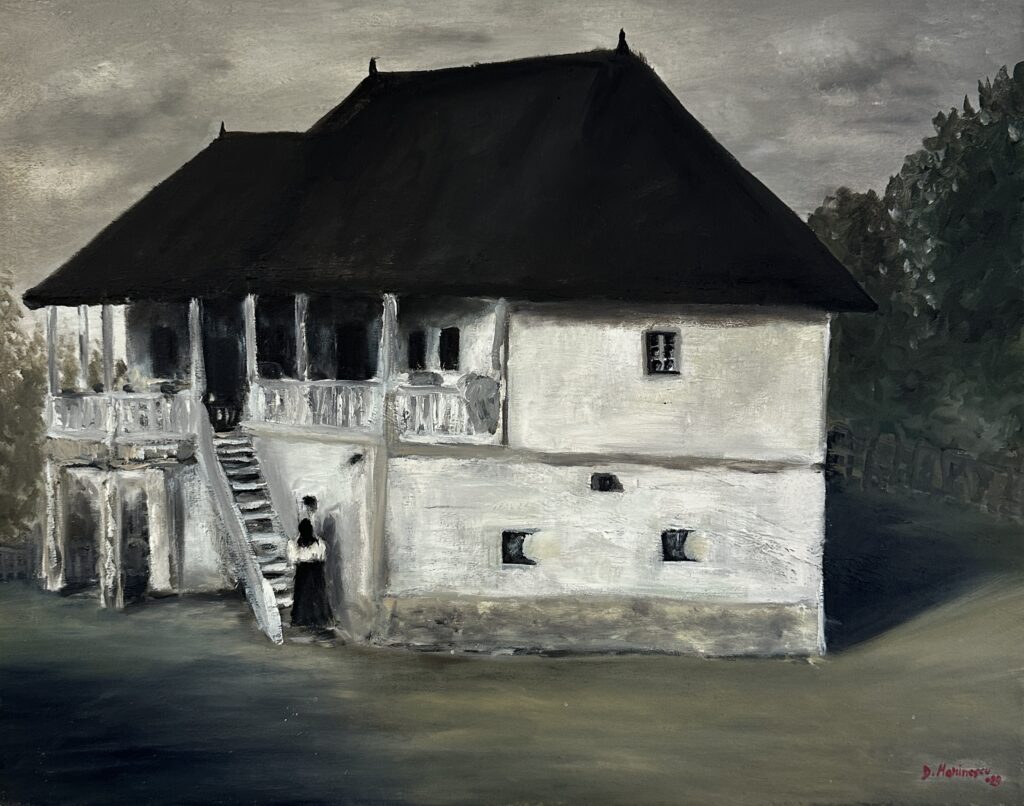
This connection to the traditional world is never sentimental. It is a dialogue rather than an imitation. The artist allows the past to breathe again within contemporary sensibility. She doens’t paint “heritage”, in the museum sense, but rather the emotion of transmission, showing how beauty pass quietly from one generation to another.
Both in her traditional themed artworks and in the contemporary setted ones, central to her visual universe is the figure of the woman. The woman in her paintings is often universalised through a lack of physiognomic traits. She inhabits the same symbolic space as the earth, the cloth, or the tree, Diana defining them as spaces of creation, patience, and transformation. Through her, Marinescu speaks about femininity as care, a care that is always present, sentient, similar to the way in which a Mother is always taking care of her children.
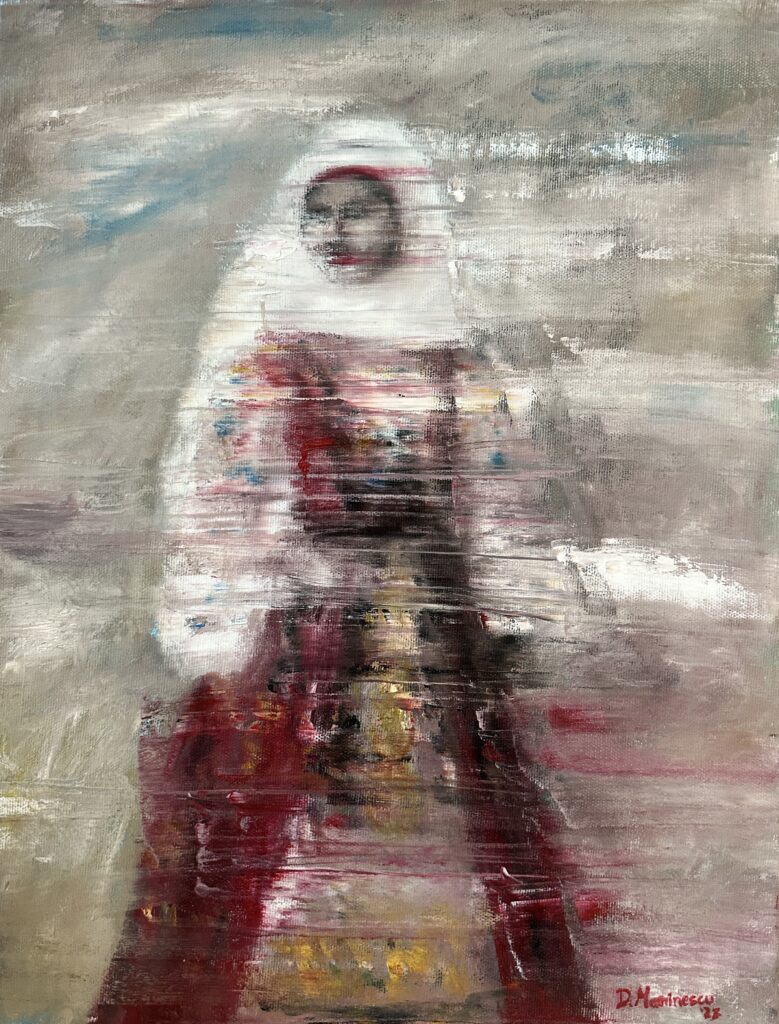
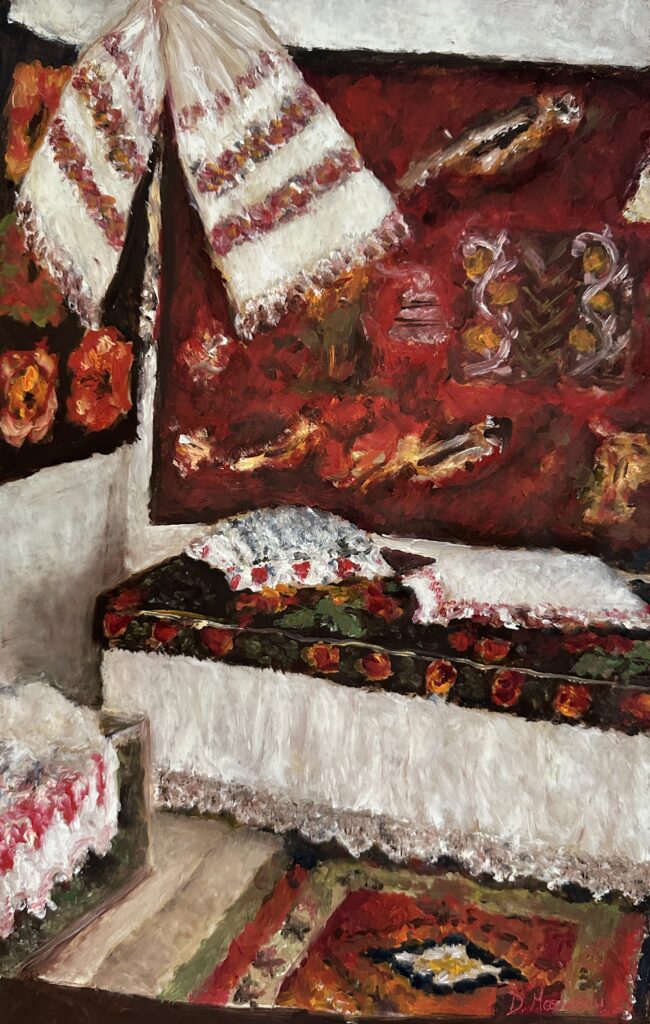
This vision aligns the artist with a broader lineage of creators, from the complex perspective on motherhood given by Lousie Bourgeois (which Diana also painted) to Ana Lupaș, who explored, through her techniques, feminity in multiple hypostases. In Diana’s work, however, the domestic becomes less about social commentary and more about her own exploration of femininity.
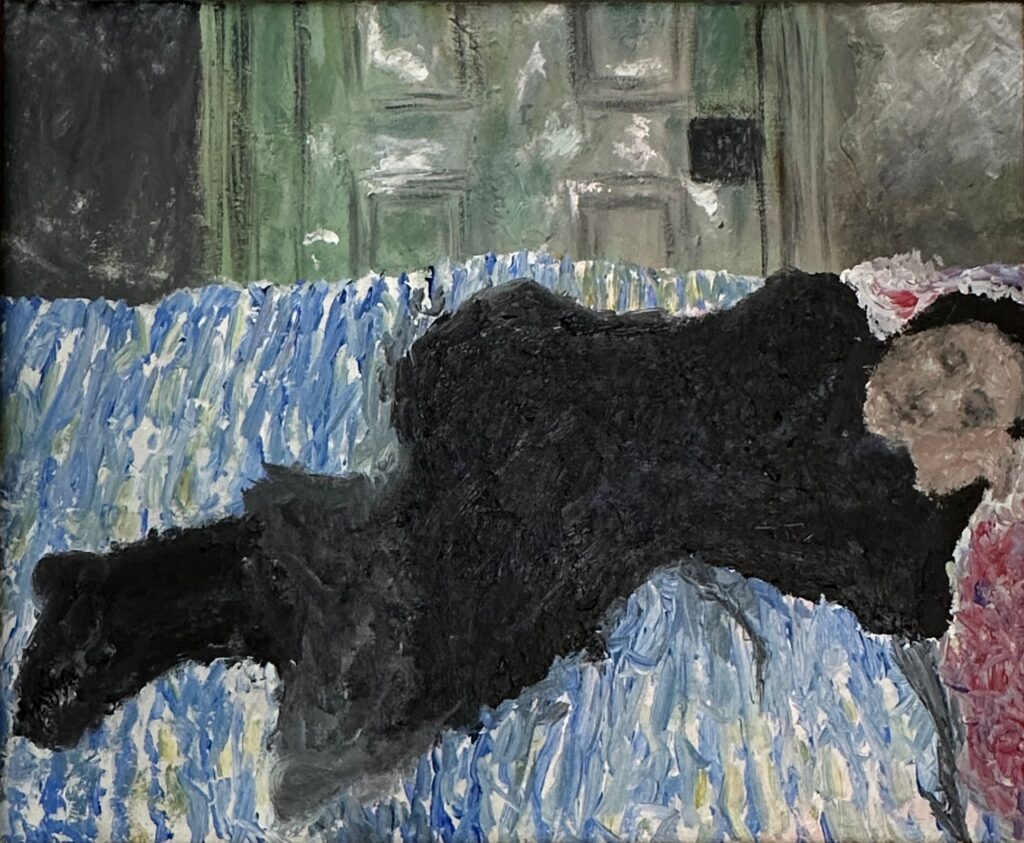
Poetics of Time

Perhaps the most distinctive quality of Diana Marinescu’s imagery is its relationship to time. Her paintings do not narrate moments, they suspend them. There is no before or after, only the perpetual present of contemplation. There is no urgency in her paintings, this being one of the traits that I, personally, appreciate the most.
The temporal stillness is an act of resistance against the acceleration of the contemporary gaze. In a culture dominated by immediacy, her work insists on the right to slowness, „forcing” us to look and linger – and ultimately, to feel.
Nonetheles, the thematic structure of Marinescu’s art can be read as a poetics of the familiar. Diana remembers them all: the house, the window, the field or women. The world she paints is recollected and shaped by the emotional sediment of what once was.
In this sense, her work operates on the threshold between the personal and the collective. Each painting resonates with a nostalgia that is not private but shared, from a nostalgia of a culture seeking its own rhythm again. And in doing so, she gives visual form to a truth both simple and profound, of a beauty that often hides in what we have ceased to notice.
Technical Aspects
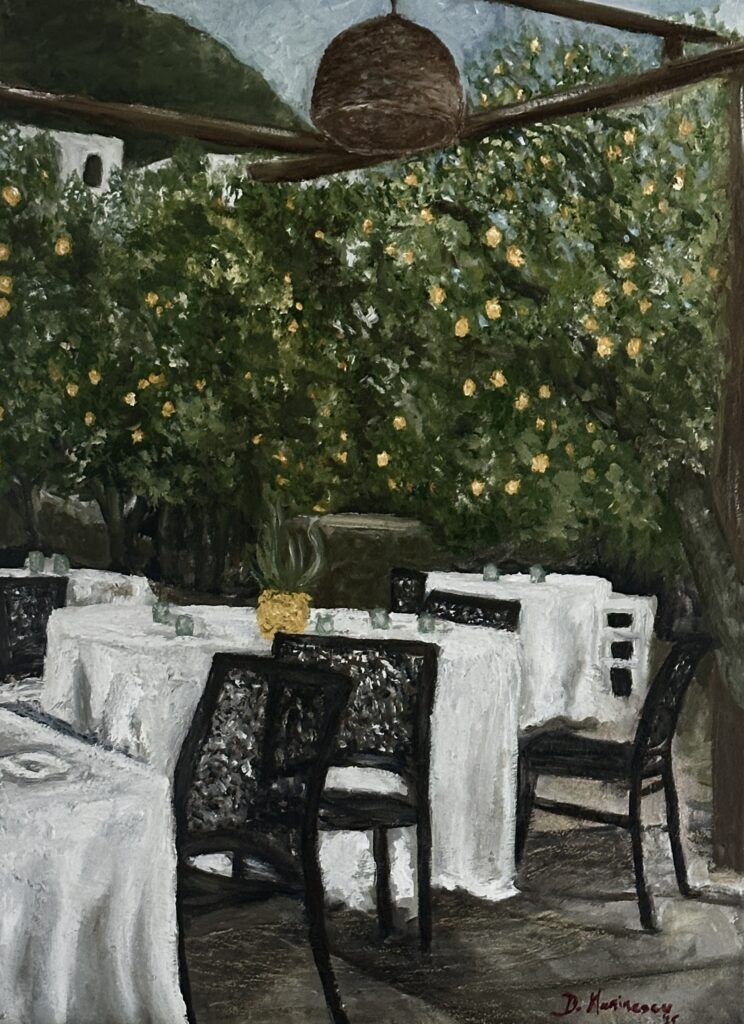
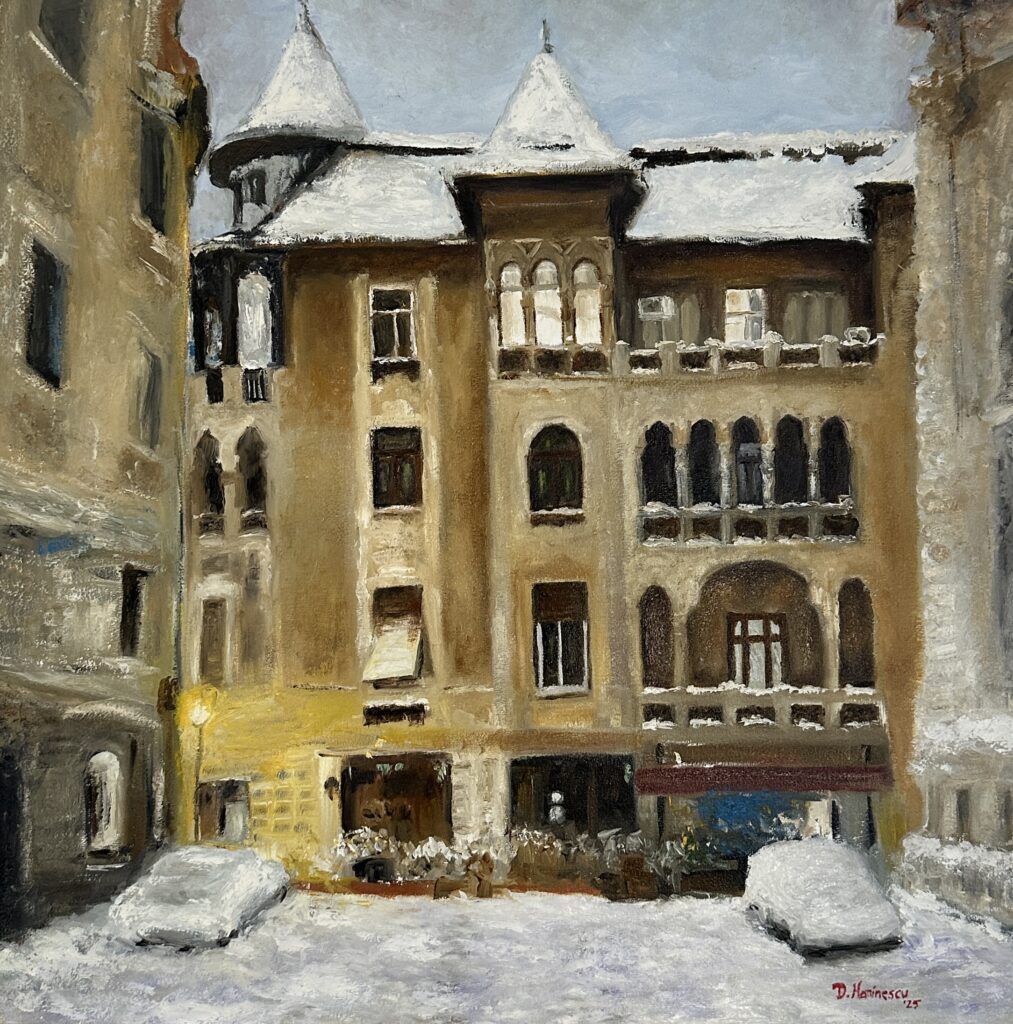
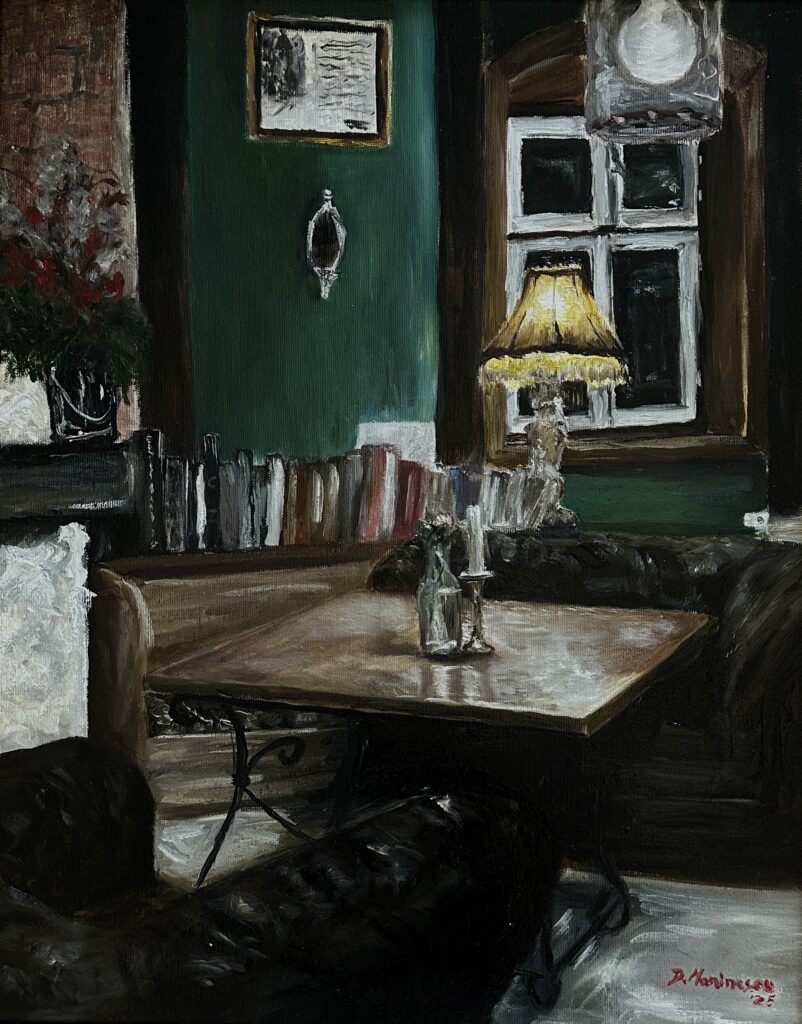
The palette tends toward soft ochres, washed blues and faded greens, hues that evoke earth and distance, material and meditative imagery. These tones seem to have been filtered through time, as if the surface itself had remembered the light of past days.
Her chromatic harmonies create a sensation of suspension. Nothing screams, nothing insists. The color appears to exhale, to settle into a balance where even silence has weight. Through this subtle restraint, she achieves a form of chromatic tenderness, a softness that matches with Diana’s artistic personality.
Such restraint might remind us of artists who have understood painting as a slow act of listening, showing the way in which she learns from the artist she also pays direct homages too: Nicolae Grigorescu and Nicolae Vermont. She treats with much care the Romanian domestic life through her colors that recall clay, or smoke and candlelight. At the same time, her landscapes are not purely visions in the field, but hidden messages in plain sight, visible only to those who wait and observe Diana’s perspective.
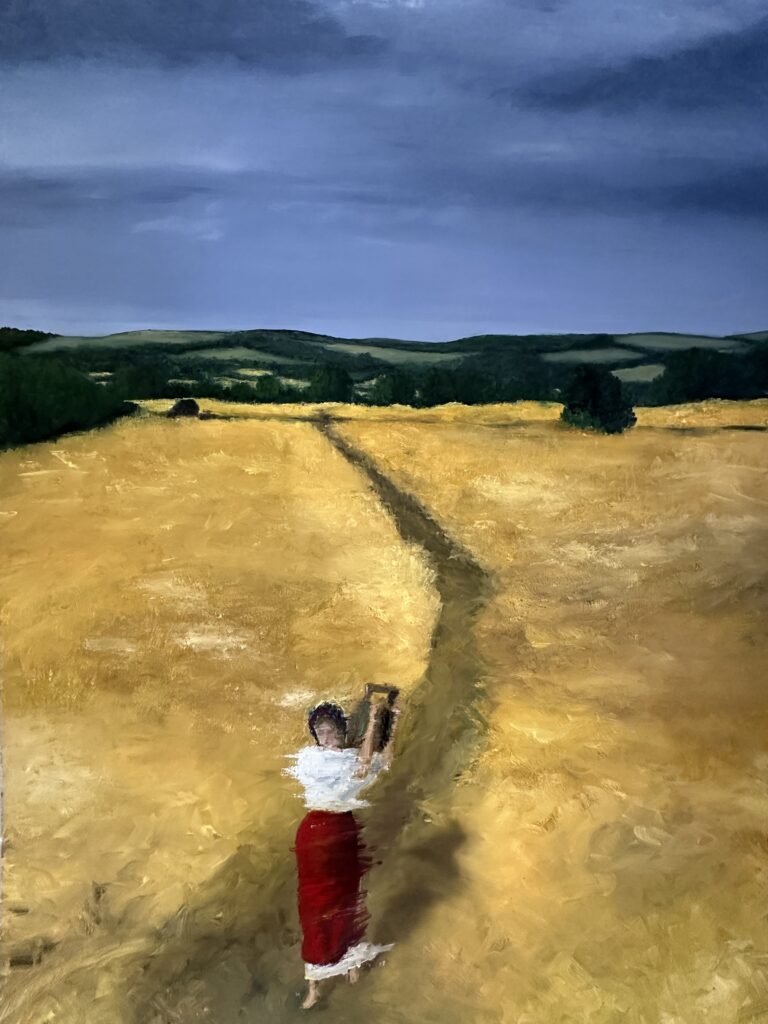
(Homage to Nicolae Vermont)
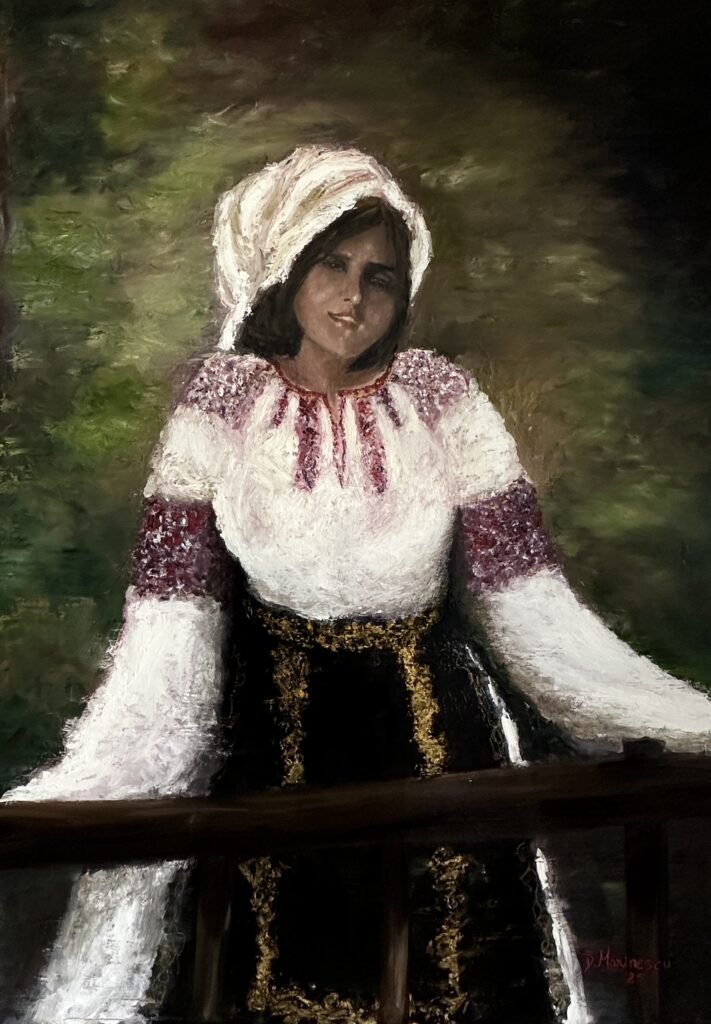
(Homage to Nicolae Grigorescu)
In formal terms, Marinescu constructs her compositions with an almost architectural precision disguised as simplicity. Figures and objects occupy space as if they had always belonged there. There is no theatricality or imposed perspective. Instead, she composes through balance, maintaining the equilibrium between presence and absence, between what is visible and what is withheld.
Her use of negative space is essential. Empty areas in her canvases are used as zones of resonance, where the eye can rest and memory can echo. Diana Marinescu gives a peaceful rhythm to her artwork, that follows the general atmosphere she depicts. Each work feels like the fragment of a longer meditation, as though painting, for her, were a continuous act, unfolding over time rather than closing upon completion.
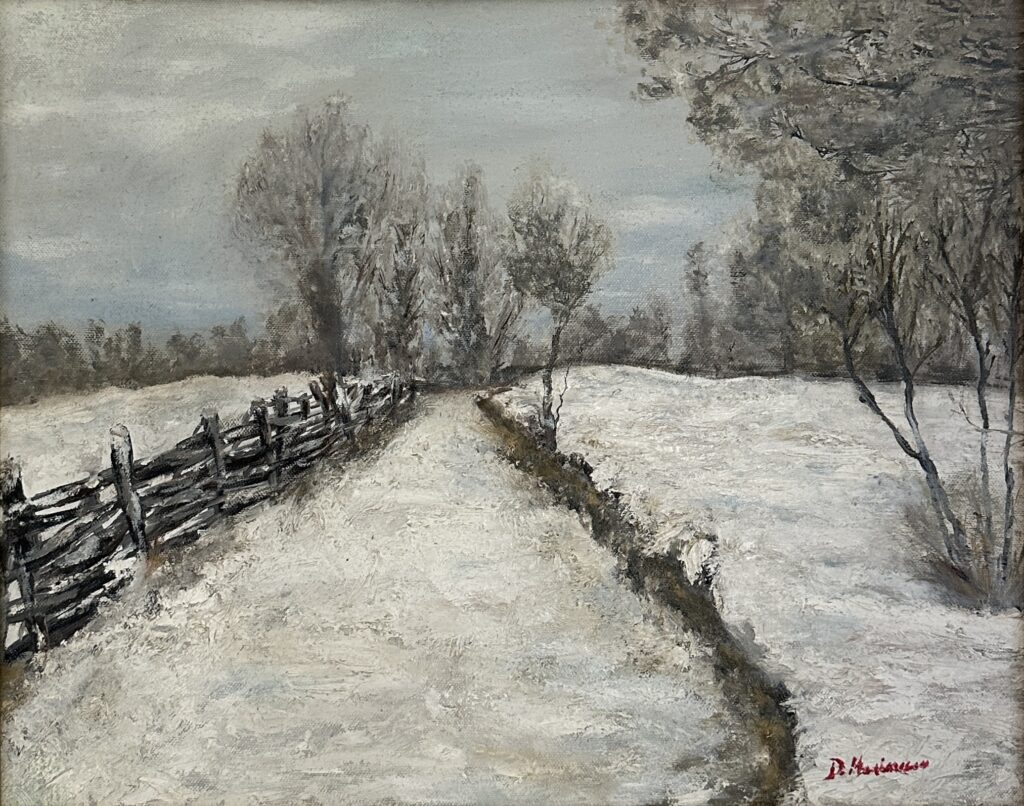
The Time of Gentle Gestures
Diana Marinescu’s art invites us into a world where silence becomes eloquent, where the ordinary acquires the density of ritual, and where painting recovers its role as a keeper of memory. Her visual universe is neither nostalgic nor documentary, but existential, rooted in the conviction that beauty resides in what endures quietly.
Through the modesty of her subjects and the tenderness of her chromatic palette, she offers an alternative to the spectacle-driven contemporary gaze. In her canvases, time settles, thickens, and becomes presence.
The emotional power of her painting lies precisely in its refusal to dramatize. Instead of imposing meaning, she creates space for it to emerge. The viewer is not confronted but welcomed, invited to dwell in the painting’s rhythm, to rediscover the dignity of small gestures. In this sense, Marinescu’s work resonates with a deeper cultural undercurrent, the reawakening of a sacred attention to the world.
Positioned within the wider context of contemporary Romanian art, Diana Marinescu belongs to a generation that rebuilds – or maybe creates for the first time – the bridges between tradition and modernity, between individual emotion and collective heritage. Her painting embodies the belief that identity is not something to be declared, but something to be lived through care, patience, and presence.





Leave a Reply